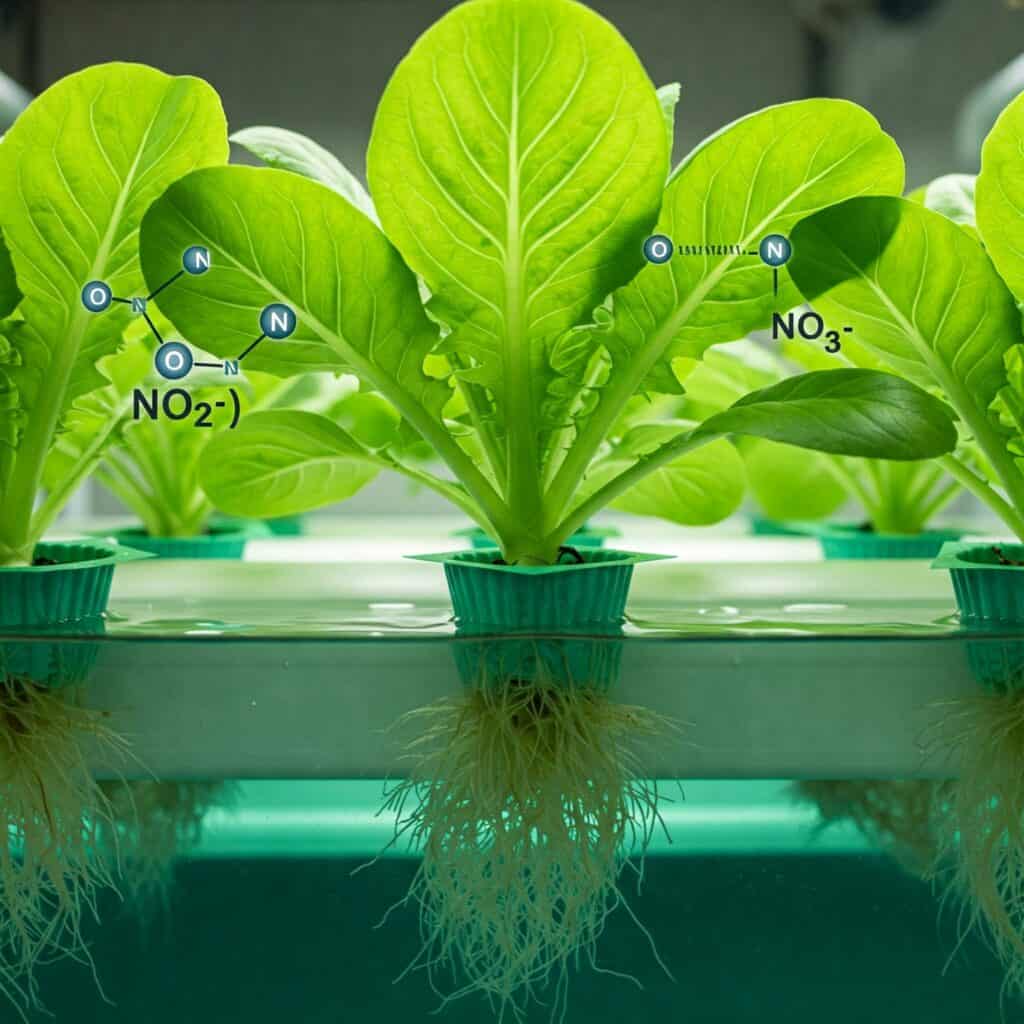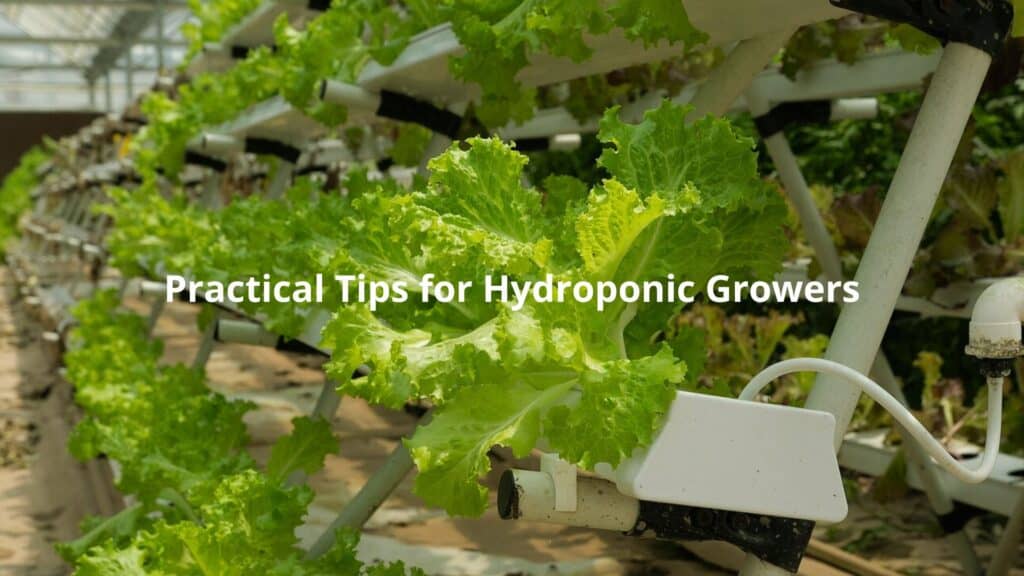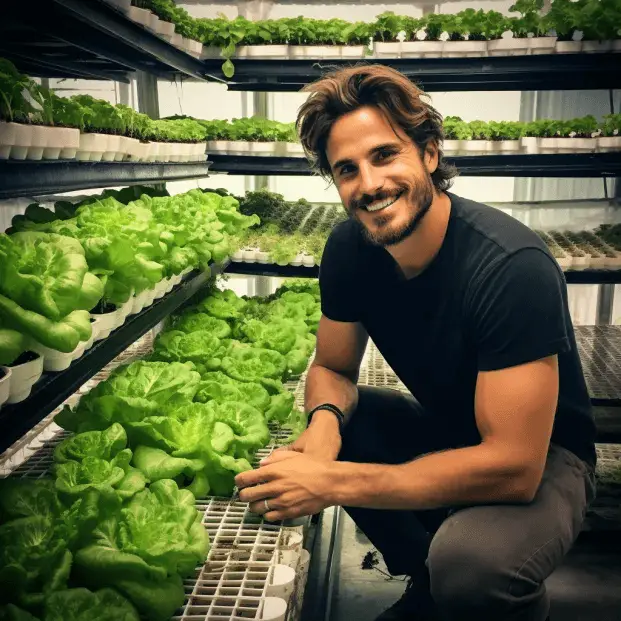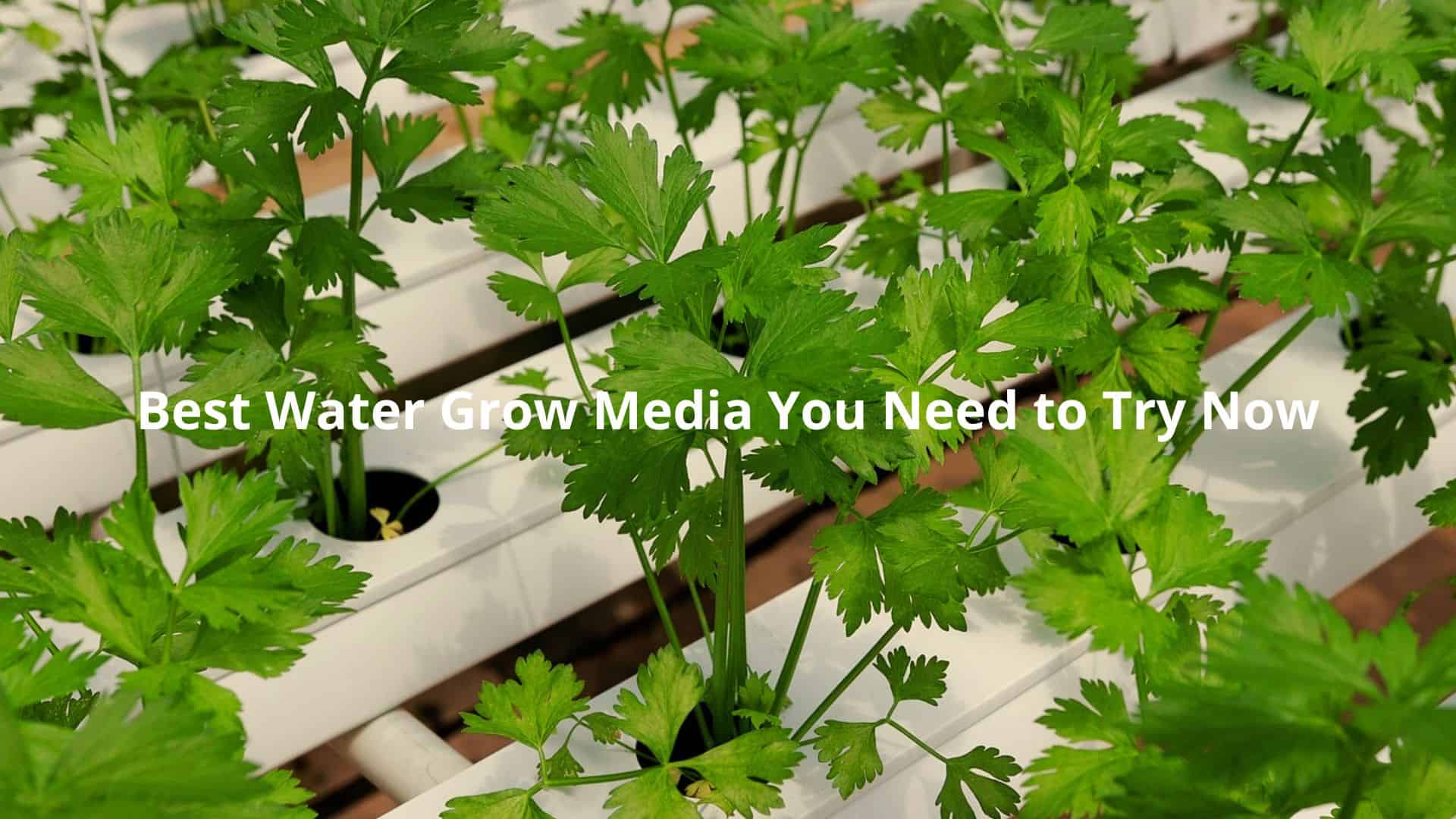You notice it straight away, plants don’t just want water, they want the right kind of home for their roots. If you use media that holds water well, supports roots, and lets air in, your plants will show their thanks. The best water-based grow media for hydroponic systems, I reckon, combine strong water retention with decent aeration, a stable pH, and you can use them again and again.
Coco coir stands out for being eco-friendly and holding onto water. Rockwool gives you sterile, precise moisture control, while vermiculite might be the best in dry climates. Perlite blends walk the line between air and water, and Mineral Magic™ brings long-term durability and buffering. Pick based on your system, your local weather, and how much effort you want to put into maintenance.
Key Takeaway
- Coco coir is versatile, eco-friendly, and handles both water and heat with ease.
- Rockwool and perlite blends are good at balancing water and air for healthy roots.
- The right growing medium depends on your system, climate, and plant needs, there’s no one-size-fits-all.
Top Water-Based Grow Media for Hydroponic Systems
Credit: Houseplantygoodness
1. Coco Coir
Source and Composition
Coco coir comes from coconut husks, and you’ll see it as bricks, loose fibre, or chips. It’s just shredded coconut husk, a byproduct that’d otherwise be tossed.
Water Retention and Aeration
Coco coir holds up to 90–95% of its volume in water. It keeps roots damp even in dry heat, but the fibrous texture lets air in, which is important for nutrient uptake and root health. Even after a big soak, it won’t turn swampy.
pH Range and Preparation
It sits at a slightly acidic to neutral pH (5.5–6.8), which suits most hydro crops. To use it, soak in pH-balanced water (aim for 5.8) before planting. This washes out excess salts and gets you started right.[2]
Reusability and Maintenance
Coco coir can be reused for two or three cycles. After harvest, rinse and soak again to flush out old salts. With a basic rinse, it’s good for another round or two.
Benefits and Suitability
Eco-friendly, biodegradable, and renewable. It keeps the root zone temperature stable and resists fungal growth. You’ll see fewer problems with root rot compared to denser media. Especially good for hot climates and folks who want a forgiving medium.
2. Rockwool
Material and Structure
Rockwool is spun from molten basalt rock, a bit like fairy floss but from stone. It’s pressed into cubes or slabs for hydro use, giving you a sterile, uniform base.
Water Retention and Aeration
It holds up to 95% water but drains just enough to keep roots from drowning. The open structure helps gas exchange, so roots don’t suffocate.
pH Characteristics and Usage Notes
Rockwool starts off a bit alkaline (7.0–8.0), so you’ll need to pre-soak it in acidic water (around pH 5.5) for a day before planting. If not, it can throw your nutrient solution’s pH off.
Reusability and Environmental Considerations
This is a single-use medium. After harvest, you have to bin it, rockwool doesn’t break down and can pile up in landfill. If you’re after sustainability, this isn’t great.
Ideal Hydroponic Systems
Rockwool is best where you want total moisture control: drip, ebb and flow, NFT, or propagation setups.
3. Vermiculite
Origin and Physical Properties
Vermiculite is made by heating mica, a silicate mineral, until it puffs up into light, spongy flakes. It feels soft, almost like gold-coloured feathers.
Water and Nutrient Holding Capacity
It holds 80–90% of its weight in water, and the layers trap nutrients like potassium, magnesium, and calcium. That makes it ideal for places with dry spells.
pH Range and Climate Suitability
Near neutral (6.5–7.2), so it won’t mess with your system’s chemistry. In dry climates, pure vermiculite keeps plants hydrated. In humid spots, blend with perlite for better drainage.
Usage Recommendations and Maintenance
Pre-moisten before planting, and replace after every cycle to avoid compaction or salt build-up. It’s light and easy to handle, but don’t expect more than three or four uses per batch.
4. Perlite Blends
Composition and Aeration
Perlite comes from volcanic glass that expands into white, popcorn-like granules when heated. Alone or blended with coco coir or vermiculite, it boosts drainage and oxygen flow.
Water Retention Balance
Perlite holds 65–75% water, not as much as coco or vermiculite, but enough to buffer roots between waterings. It’s hard to overwater with perlite-heavy blends, excess just drains out.
Reusability and Cost-effectiveness
It lasts four to five cycles if you’re careful. After each crop, sift out plant debris, rinse, and sterilise before reuse. Compared to other media, perlite is cheap and easy to find.
Best Use Cases
Best for growers who want to fine-tune the air-to-water ratio in their media, especially in NFT, wick, or drip systems. Also handy for mixing with vermiculite or coco coir to get the balance you want.[1]
5. Mineral Magic™
Material Origin and Composition
Mineral Magic™ is a branded mix of minerals and clay, made for water retention and thermal stability. The recipe is a secret, but it’s built for reuse and buffering.
Suitability for Variable Climates and Commercial Use
If you’re growing in a greenhouse or want multiple cycles a year, Mineral Magic™ saves time. It’s durable, easy to clean, and doesn’t break down quickly. Commercial growers like it for this.
Mineral Magic™ is a branded mix of minerals and clay, made for water retention and thermal stability. The recipe is a secret, but it’s built for reuse and buffering.
Water Retention and Temperature Stability
Holds 85–90% water, with a structure that spreads both water and nutrients evenly. Acts as a thermal buffer, so roots don’t get shocked by temperature swings.
pH Neutrality and Reusability
Its pH runs from 6.8 to 7.2, so no need for acid baths or pre-soaking. Reusable for five or more cycles, which helps with the higher upfront cost.
Suitability for Variable Climates and Commercial Use
If you’re growing in a greenhouse or want multiple cycles a year, Mineral Magic™ saves time. It’s durable, easy to clean, and doesn’t break down quickly. Commercial growers like it for this.
Choosing the Best Water-Based Grow Medium

Factors to Consider
- Water Retention Needs
If you’re in a hot climate or want to stretch irrigation, go for coco coir or vermiculite. For cooler, wetter spots, perlite blends or rockwool might be safer. - Aeration and Root Health
Air matters as much as water. Perlite and rockwool are best here. Coco coir and Mineral Magic™ balance both. - pH Stability and Compatibility
Match your medium’s pH to your crop’s needs. Rockwool needs acid prep, while coco coir and Mineral Magic™ are ready to go. - System Type and Climate Conditions
DWC and ebb and flow like heavier, water-holding media like coco coir or rockwool. NFT and drip systems prefer lighter, airier blends.
Recommendations Based on Conditions
- Eco-Friendly and High Water Retention:
Coco coir is top of the list, renewable, easy to use, and gentle on roots. - Precise Moisture Control in Sterile Systems:
Rockwool is the gold standard, but only if disposal isn’t an issue. - Dry and Arid Climates:
Vermiculite shines, especially if you want to cut back on watering. - Balanced Moisture and Aeration:
Perlite blends let you tweak conditions for finicky crops. - Durability and Thermal Buffering:
Mineral Magic™ is for long-haul growers and commercial setups.
Practical Tips for Hydroponic Growers

Hydroponically cultivated lettuce plants flourishing in a controlled indoor environment. Credit: pixabay.com (photo by: marsraw)
Preparation and Conditioning of Media
- Soaking and pH Adjustment:
Always pre-soak coco coir and rockwool in pH-adjusted water. - Cleaning and Sterilization for Reuse:
Rinse perlite, coco, and Mineral Magic™ between cycles. Boil or bake, if needed, to kill pathogens.
Maintenance and Monitoring
- Moisture Level Checks and Irrigation Management:
Check daily during hot spells, media can dry out fast. - Electrical Conductivity (EC) and Nutrient Balance:
Watch EC to avoid salt buildup, especially in coco coir and vermiculite. - Temperature Control and Root Zone Stability:
Use shade cloth or insulating trays in hot greenhouses.
System-Specific Media Selection
- DWC, NFT, Ebb and Flow:
Match media to system demands. NFT and towers need light, airy media; DWC likes something with heft and water-holding power. - Adjusting Media Mixes for Optimal Performance:
Don’t be afraid to mix perlite and coco coir, or blend vermiculite and perlite for custom results.
Conclusion and Next Steps
No single medium fits every grower or every system. Start with coco coir if you’re new. If you want sterile, uniform conditions, rockwool is hard to beat. For dry climates or water savings, vermiculite is a winner. If you need to fine-tune water and air, reach for perlite blends. And if you want hassle-free, long-term use, Mineral Magic™ pays off.
Test, observe, and adjust, great hydroponic gardens are built by growers who pay attention, not just by the media they choose. If you’re ready to get started or try something new, pick up a small batch of your chosen medium, and track how your plants respond. Your roots know what they like, watch them, and you’ll find your best growing media fast.
Want more advice or details? Check out growers’ forums, ask at your local store, or drop me a note. Happy growing.
FAQ
What makes a water-based grow medium good for both hydroponics and aquaponics?
A strong water-based grow medium balances moisture, airflow, and pH. Materials like clay pebbles, Hydroton grow media, or expanded clay aggregate are all solid picks because they’re pH-neutral grow media and offer great root aeration media. For aquaponics grow media, it’s also important to choose a porous grow media that supports biofiltration media. That way, your system helps both plants and fish thrive. Bonus: many of these options are reusable grow media, so you save money over time.
Which lightweight grow media works well in flood and drain systems?
If you’re running a flood and drain setup, you need something with good airflow and drainage. Lightweight clay balls, porous volcanic rock media, and Growstone substrate are top picks. These are lightweight grow media choices that double as aeration and drainage media. They also work great as media for hydroponic root support, and many are soilless grow media, which helps prevent messes. Most also act as media for temperature stability, making them reliable across seasons.
How do different grow media affect water retention and nutrient uptake?
Water and nutrients are everything in hydro systems. Coco coir substrate, vermiculite growing medium, and perlite growing media all offer high water-holding capacity media and act as strong nutrient retention media. Want better growth? Pick a media with high cation exchange capacity, it helps plants grab and hold onto nutrients longer. Just watch that the media still drains well to avoid soggy roots. Mixing organic hydroponic media and inorganic grow media can help balance things out.
What’s the best grow media for starting seeds or rooting cuttings?
For young plants, you need media that holds just enough moisture but still lets roots breathe. Rockwool grow media, soilless grow media, and perlite growing media all work great. They’re common media for hydroponic seed starting and grow media for cuttings because they offer solid support while avoiding root damage. Look for media for hydroponic propagation that also helps with balanced moisture and aeration. For leafy greens, a grow media for leafy greens type can give your starts a real boost.
How do I pick grow media for different hydroponic systems?
Different systems need different things. For deep water culture, choose media for deep water culture like Hydroton grow media that supports oxygen flow. Media for nutrient film technique should be light and fast-draining. For drip systems, try media with reusable cycles that resists clogging. Grow media for aeroponics must stay dry and airy, while flood and drain media should handle quick wet-dry shifts. Always match the hydroponic substrate options to your system’s needs.
References
- https://www.greengenius.com.au/blogs/news/5-best-hydroponic-growing-media-for-water-retention
- https://envirevoagritech.com/hydroponic-growing-media-complete-guide/
Related Articles
- https://tophydroponicgarden.com/how-to-use-ph-adjusters-in-hydroponics/
- https://tophydroponicgarden.com/hydroponic-garden-maintenance/
- https://tophydroponicgarden.com/hydroponic-systems/
Was this helpful?

I’m Barrie L., a passionate hydroponic gardening enthusiast dedicated to cultivating thriving, soil-less gardens. With a focus on all things hydroponic, I share my expertise on innovative growing techniques and sustainable practices through my blog, tophydroponicgarden.com. As a seasoned hydroponics specialist, my goal is to inspire and guide fellow gardeners in harnessing the power of water-based cultivation for bountiful and eco-friendly harvests. I’m also an author of the book “Hydroponics For Absolute Beginners: Your Step By Step Guide For How To Create An Hydroponics System At Home Without Soil, For Growing Vegetable, Fruit And Herbs.” which is sold on Amazon. Join me on a journey of redefining the way we cultivate plants, one nutrient-rich solution at a time. Happy growing!


